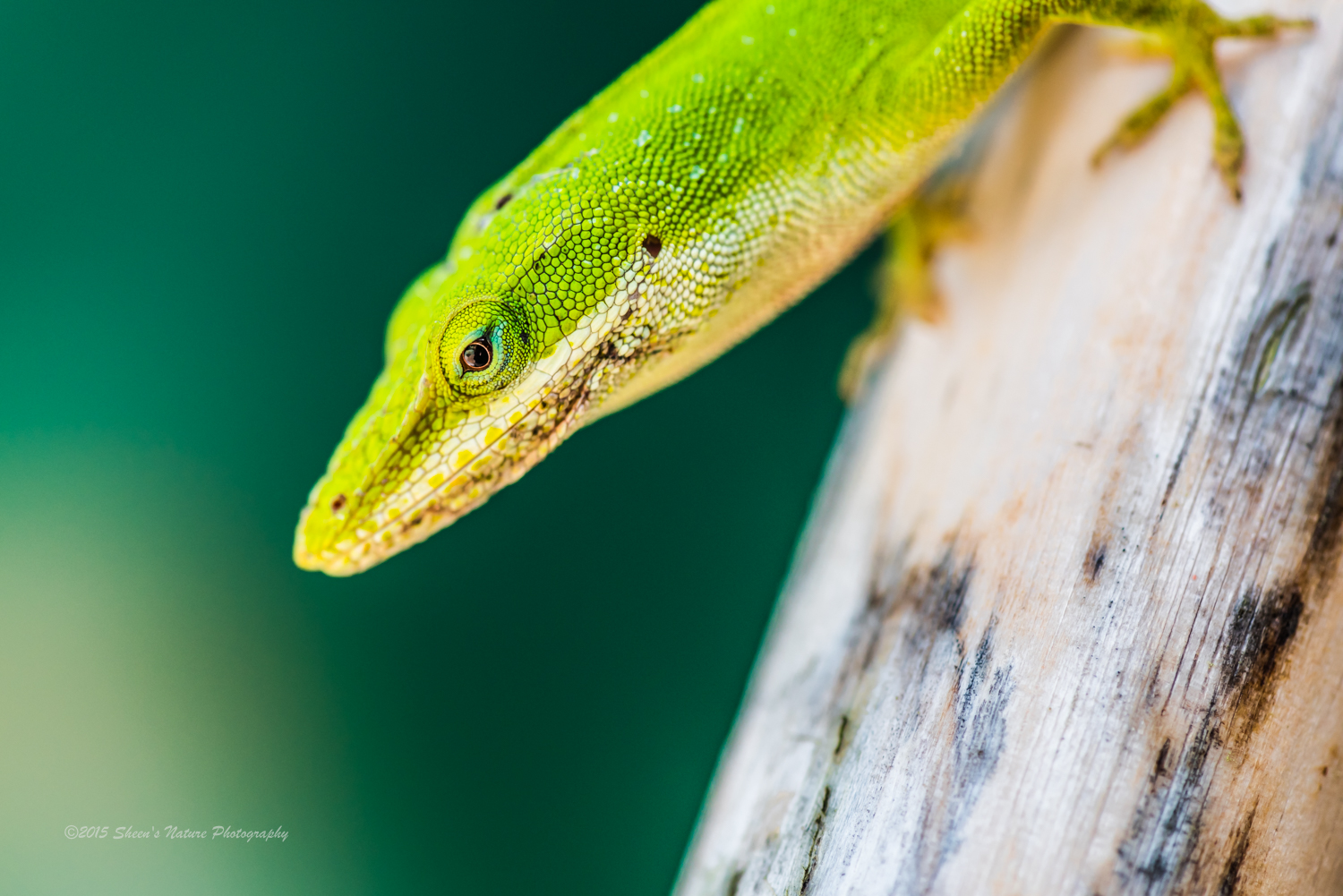Matrix (Nikon)/Evaluative (Canon) metering is the standard go-to choice of the metering options. Many photographers select Matrix metering and never use the other choices of Spot Metering and Center Weighted Metering. The primary reason that Matrix Metering is the default setting on most cameras is that it works effectively in the majority of situations. There are also situations that Spot Metering may be a better choice. We'll explore how both Matrix and Spot Metering work and provide examples of each.
This macro of the green lizard perched on a wooden stick was taken mid afternoon. The lighting was filtered sun and some shadows. Matrix metering read the darks, the shadows the lights. The focus point was on the lizard's eyes. Overall the metering effectively balanced the exposure with my settings.
Matrix Metering
The way matrix/evaluative works is that your camera reads the overall lighting from the scene using multiple points and then determines the optimal exposure. The area you choose as the focus point will take a higher priority as your camera measures the light intensity.
Each camera may read the scene a bit differently. It's with trial an error that you'll adjust your settings to your own personal preferences. For example, I may step down my exposure compensation by 1/3 in some situations and step up by 1/3 in others based on how my camera performs.
Spot Metering
Spot metering is typically used in scene that has a lot of contrast. The reading is taken from a very small area and then the exposure is composed. As the name ‘spot metering' implies, the ‘single' focus point option should be selected.
Examples of Matrix vs. Spot Metering
The 2 candle images below show a comparison of how matrix and spot metering read the scene. I used the same aperture and ISO settings, only adjusting my selection of matrix and spot metering.
Matrix metering: The camera read points from the total scene. With both the bright light from the candle combined with a significant amount of dark in the background, the shutter speed was 1/8 second (tripod used). My focus point was on the flame. While it's in focus, other parts of the candle are brighter too with a glowing effect.
Spot Metering: With the focus point still on the flame and using the same Aperture setting of f/6.3, the shutter speed was faster 1/100 sec due to reading the flame and not the darks. Both have features that are positive. The image using spot metering has a softer mood and looks like the actual scene that I photographed.
When to use matrix? Landscapes, wildlife, nature, portraits, you want the total lighting from the overall scene.
When to use spot? High contrast situations, subject is much brighter or darker than the background, you want the exposure to be based on a specific area.
Here's a couple of Light Stalking articles written about metering:
If you're not certain, switch back and forth with your subject and make your final decision in post processing.








1 Comment
Great description of metering.
Thank you!